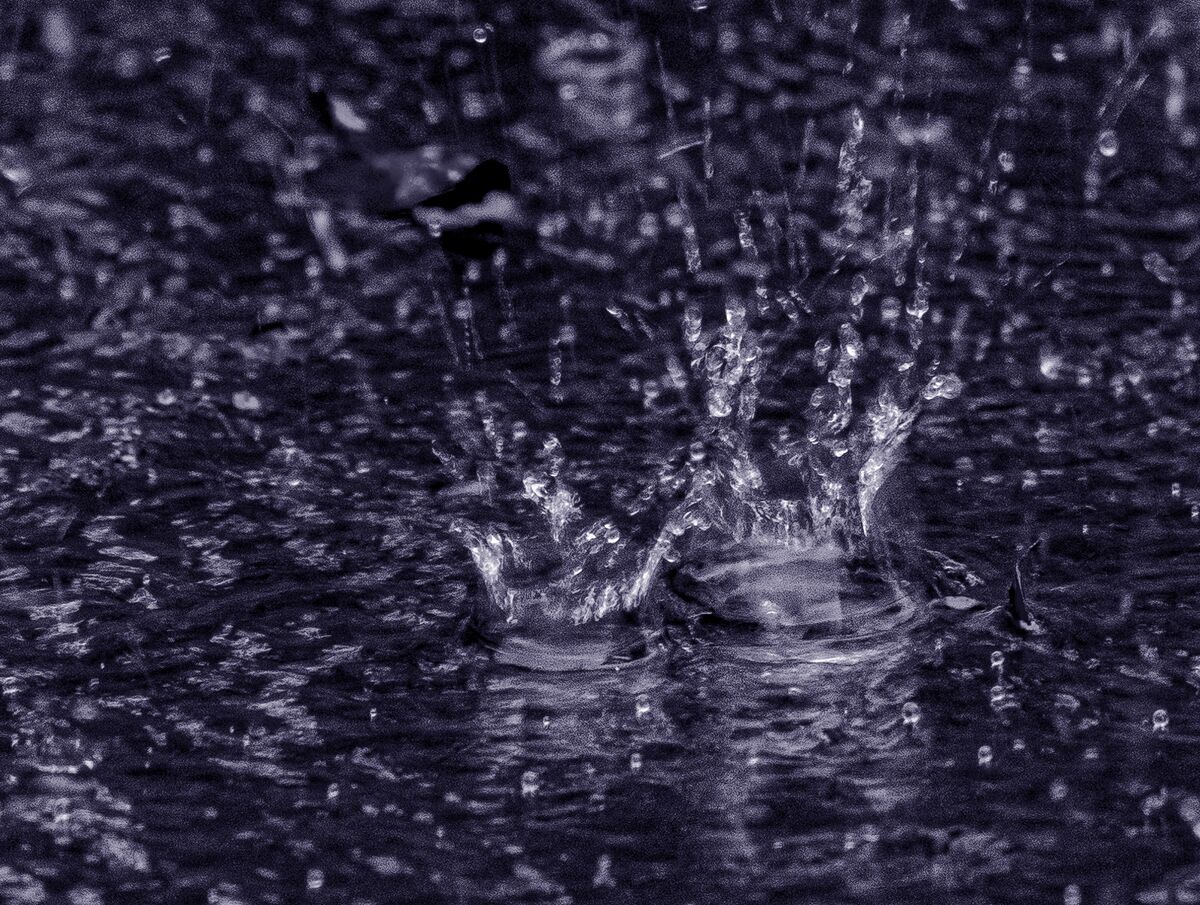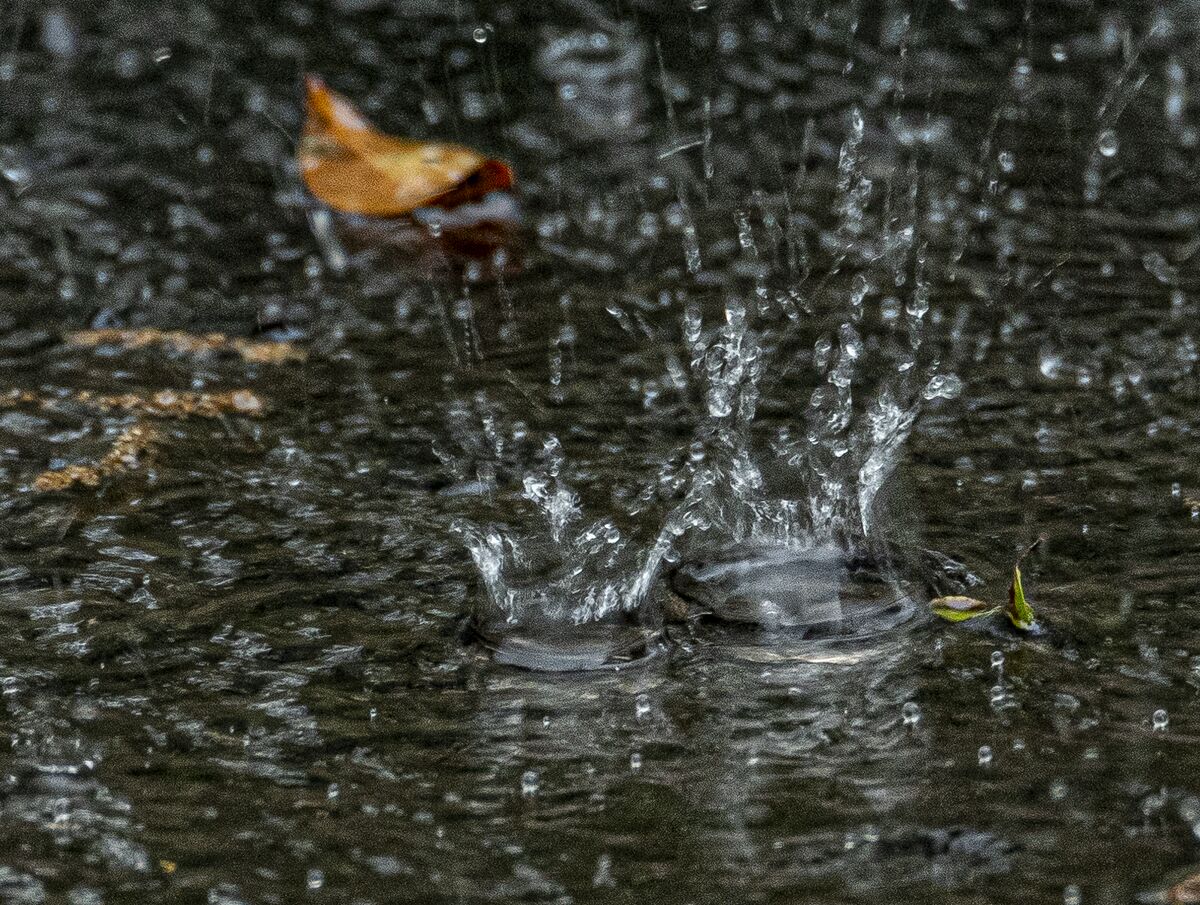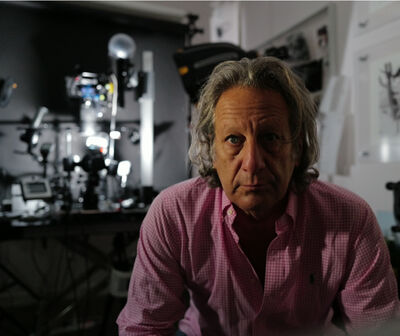Black and white photography -- do you use one of the primary colors to convert or just all colors?
Feb 11, 2024 15:09:45 #
So much disinformation on PS CC using only three sliders when using the B&W layer...
Process:
1 - Create a Selective color layer
2 - Create the B&W layer
3 - Create color balance layer
Order in PS CC thumbnail layers:
- Color balance
- B&W
- Selective color
- Whatever changes made prior (I suggest grouping them to have a clean workspace)
- Background layer copy (if used)
- Background layer copy (usually locked)
- Select B&W - adjust global transform
- Select Selective color - micro adjust per color (dropdown to select then sliders)
- Select Color balance - use to create tint
As if that was not enough, you can use each layer option to further control the result.
Please note that this results in a monotone color image. NOT a 'pure' B&W
Process:
1 - Create a Selective color layer
2 - Create the B&W layer
3 - Create color balance layer
Order in PS CC thumbnail layers:
- Color balance
- B&W
- Selective color
- Whatever changes made prior (I suggest grouping them to have a clean workspace)
- Background layer copy (if used)
- Background layer copy (usually locked)
- Select B&W - adjust global transform
- Select Selective color - micro adjust per color (dropdown to select then sliders)
- Select Color balance - use to create tint
As if that was not enough, you can use each layer option to further control the result.
Please note that this results in a monotone color image. NOT a 'pure' B&W
Feb 11, 2024 15:28:16 #
Look forward to Voss perhaps describing his 'method'.
I really admire his 'tone' of B&W treatment.
I really admire his 'tone' of B&W treatment.
Feb 12, 2024 00:29:52 #
I shoot both JPEG and RAW with my Nikons, and sometimes I will select monochrome in camera and shoot direct. Now that I have a Z8, when I select monochrome and look thru the viewfinder, I am looking at a monochrome image. I like using Nikon's NX Studio software for most of my post processing; I like it because I have multiple options for the monochrome setting, a few of those options allow me to apply filters to the monochrome originals or to any RAW file that I have decolorized. What I like about NX Studio software, that software mimics a number of items in my Nikon camera MENU. I have had multiple RAW files set for monochrome, open up as monochrome on my desktop computer. Got some nice color shots in Alaska last September; those same shots decolorized are also very impressive without color.
Feb 12, 2024 05:56:38 #
I use Topaz B&W Effects 2. I start with a color RAW data and then use the software that has worked very nicely for me because of its many setings.
Feb 12, 2024 07:14:35 #
Here is a conversion recipe that provides great control. It’s complex but great. There are a lot of programs like Nik silver effects pro that provide great options as well.
1. Open the image, assuming that its RAW, make your Lightroom or ACR adjustments;
2. Once the raw image is open in PS, select Lab Color under Mode;
3. Once open in Lab Mode, under your channels pallet, highlight the Lightness Channel;
4. Go back to Mode menu and select Gray scale, PS will ask you to discard other channels, click “Yes”;
5. Now hold your CTRL key and while holding your CTRL key, click the gray channel that should be highlighted in your channels pallet. You should now have the dancing ants at this time;
6. Now select Inverse in your Selection menu;
7. Convert back to RGB Mode under the Mode menu;
8. After converting to RGB, go to your layers pallet and at the bottom, click on create new adjustment layer (the B&W Circle);
9. Choose solid color and pick the color that you want if you want to add any color, if not, choose a neutral gray;
10. On the upper layers pallet, choose multiply and the adjust your opacity and curves;
11. Do your final processing and print.
1. Open the image, assuming that its RAW, make your Lightroom or ACR adjustments;
2. Once the raw image is open in PS, select Lab Color under Mode;
3. Once open in Lab Mode, under your channels pallet, highlight the Lightness Channel;
4. Go back to Mode menu and select Gray scale, PS will ask you to discard other channels, click “Yes”;
5. Now hold your CTRL key and while holding your CTRL key, click the gray channel that should be highlighted in your channels pallet. You should now have the dancing ants at this time;
6. Now select Inverse in your Selection menu;
7. Convert back to RGB Mode under the Mode menu;
8. After converting to RGB, go to your layers pallet and at the bottom, click on create new adjustment layer (the B&W Circle);
9. Choose solid color and pick the color that you want if you want to add any color, if not, choose a neutral gray;
10. On the upper layers pallet, choose multiply and the adjust your opacity and curves;
11. Do your final processing and print.
Feb 12, 2024 08:04:36 #
I shoot in raw, edit in color, then convert in LR to b&w, re-edit in LR, and then usually go to Silver Efex Pro 2 for fine tuning and, often, for framing.
Feb 12, 2024 08:21:12 #
mizzee
Loc: Boston,Ma
I use camera matching in LrC profiles and whichever of the b&w filters works best with my subject.
Feb 12, 2024 11:10:03 #
Having started photography back in the 60s and having both a BFA and MFA in photography, I have trained myself to see the subject in both B&W and Color. My preferred method is to use my B&W converted Sony a7ii and filters. Mostly the red, orange and green filters on the lens. There are times that I don't have that dedicated B&W camera with me. In that situation I will shoot in color and then convert in the computer. I use either Apple Photo program or ON1 to convert to B&W . I don't use the B&W switch in the camera or filters when shooting in color. You have more control by shooting in color and then converting in post processing. You may ask "why a dedicated B&W Camera"?. It gives higher resolution than a PP color image. But the main reason is that the final results emulates the quality of films of days gone bye like Tri-X, and Panatomic-X . I have used Fuji cameras and shot images with their B&W film emulations. Fuji does an excellent emulation in the camera. Enjoy shooting in B&W.
Feb 12, 2024 12:13:08 #
JZA B1 wrote:
I know some people use a lens filter to only let in green light when they want to ultimately convert the image to black and white. That way they get to minimize chromatic aberration and other distortions present when light of widely different wave lengths hits the glass.
But if you take color pictures and later decide to convert them to black and white, do you pick one of the colors or just overall luminance? Or some other system or method?
But if you take color pictures and later decide to convert them to black and white, do you pick one of the colors or just overall luminance? Or some other system or method?
Depends on what I want to accomplish...
bwa
Feb 12, 2024 12:45:53 #
If you want your B&W conversions to look like B&W Film you need all three colors. That's what 'Panchromatic" means. Orthochromatic film had very low red sensitivity so you got the Blue/Green part of the spectrum.
You may choose to use them in varying proportions.
For example in a Portrait boosting the red channel will lighten skin tones in a very pleasing way.
Similar to the way a yellow orange or light red filter was used on Film. It will also darken clear blue skies.
You can Cut Red and boost Green to get some of the Green filter for portraits of Men that kodak used to recommend.
This will also lift foliage from drab to more interesting.
If you simply 'desaturate' you are giving up this ability, which may or may not be what you want.
If you use only one channel, you will usually get something that is less than optimal in most cases.
How you want your pictures to look, is a personal decision.
Using desaturation in combination with the channel mixer, gives you the control to get the look you want.
If you use a monochrome sensor the Look is baked in which in Leica's Case to my eye is beautiful but fixed. You also get more acuity. So if that is the look you want, you are all set.
If you use a 'Preset' to get B&W, you can figure out what it is doing this way.
>Take the file you want to convert, and duplicate it
>apply your filter to one of them
>Compare where all the sliders are in your editor and you will know how to get that result, OR , modify it to your liking so yours does not look like everyone else who used a preset.
It is a good way to learn to get whatever results you want to get.
Good Luck
You may choose to use them in varying proportions.
For example in a Portrait boosting the red channel will lighten skin tones in a very pleasing way.
Similar to the way a yellow orange or light red filter was used on Film. It will also darken clear blue skies.
You can Cut Red and boost Green to get some of the Green filter for portraits of Men that kodak used to recommend.
This will also lift foliage from drab to more interesting.
If you simply 'desaturate' you are giving up this ability, which may or may not be what you want.
If you use only one channel, you will usually get something that is less than optimal in most cases.
How you want your pictures to look, is a personal decision.
Using desaturation in combination with the channel mixer, gives you the control to get the look you want.
If you use a monochrome sensor the Look is baked in which in Leica's Case to my eye is beautiful but fixed. You also get more acuity. So if that is the look you want, you are all set.
If you use a 'Preset' to get B&W, you can figure out what it is doing this way.
>Take the file you want to convert, and duplicate it
>apply your filter to one of them
>Compare where all the sliders are in your editor and you will know how to get that result, OR , modify it to your liking so yours does not look like everyone else who used a preset.
It is a good way to learn to get whatever results you want to get.
Good Luck
Feb 12, 2024 12:48:38 #
My first step is to adjust all the colors so I have a nice color image, one that could be published.
After I am satisfied with this basic image, I choose which method I want to use to convert it to monochrome (Photoshop has many options for this).
Use of a software color filter — if used at all — is totally dependent on the individual photo and the final effect I am looking for. Each color has its own unique impact on the image.
For instance, the red filter is a great way to put drama into a b&w image. Red will turn into white and foliage appear very dark. It will darken blue skies, making clouds pop. By the same token, when used with a portrait photo, the red filter can soften the lines and crinkles in the face.
There are no set rules. Each photo needs to be considered individually.
After I am satisfied with this basic image, I choose which method I want to use to convert it to monochrome (Photoshop has many options for this).
Use of a software color filter — if used at all — is totally dependent on the individual photo and the final effect I am looking for. Each color has its own unique impact on the image.
For instance, the red filter is a great way to put drama into a b&w image. Red will turn into white and foliage appear very dark. It will darken blue skies, making clouds pop. By the same token, when used with a portrait photo, the red filter can soften the lines and crinkles in the face.
There are no set rules. Each photo needs to be considered individually.
Feb 12, 2024 13:49:03 #
JZA B1 wrote:
I know some people use a lens filter to only let in green light when they want to ultimately convert the image to black and white. That way they get to minimize chromatic aberration and other distortions present when light of widely different wave lengths hits the glass.
But if you take color pictures and later decide to convert them to black and white, do you pick one of the colors or just overall luminance? Or some other system or method?
But if you take color pictures and later decide to convert them to black and white, do you pick one of the colors or just overall luminance? Or some other system or method?
Photoshop does (to me) a great job - if you use their black and white converter which allows you to adjust each channel
Feb 12, 2024 14:04:49 #
bonjac wrote:
Looks like a lot of partial answers here, but as far as what colors to use not much help. I'm going to be either but I suggest you get on YouTube and pose the question -- I remember seeing a video on there that showed what each color did with respect to changing to B&W. As I recall, red was very prominent. You could try an experiment with photo that has lots of color and then adjust each of the primary colors and see what happens and eventually combinations.
Jack
Jack
Yeah, I'm not asking how to convert color image to b&w. I'm really more interested in which of the characteristics or factors of the original image go into making b&w image. And if adopting one color as the source data is more beneficial for any given situation.
Feb 12, 2024 14:48:27 #
JZA B1 wrote:
Yeah, I'm not asking how to convert color image to b&w. I'm really more interested in which of the characteristics or factors of the original image go into making b&w image. And if adopting one color as the source data is more beneficial for any given situation.
It's often about the contrast between colors. If you have two colors next to each other and they both render in the same shade of grey, you can adjust it so there is contrast between them. The good thing about converting in post is you don't have to select one color like you would if you were shooting film with color filters. You can use any of the in-between colors.
If you want to reply, then register here. Registration is free and your account is created instantly, so you can post right away.









